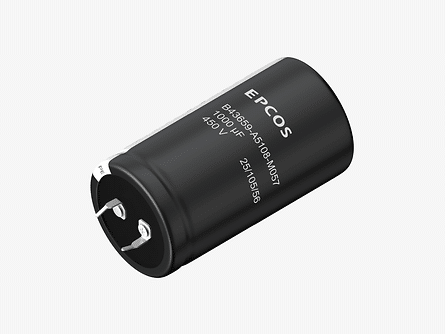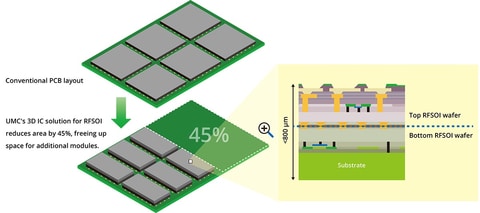//php echo do_shortcode(‘[responsivevoice_button voice=”US English Male” buttontext=”Listen to Post”]’) ?>
The human brain continues to baffle scientists with its intricate dance of neurons. Understanding this biological marvel and replicating its information-processing capabilities have been relentless pursuits for decades.
This quest has led researchers down fascinating avenues, one of which explores the potential of neuronal cultures—artificial environments that mimic the brain’s cellular organization. This article delves into the exciting intersection of neuronal cultures, robotics and the potential for neuron-based artificial intelligence.
Researchers at the Universitat de Barcelona Institute of Complex Systems are now growing neurons in the lab, allowing them to study the emergence of complex behavior from interconnected neurons in a controlled environment.
EE Times recently had the opportunity to visit the lab and talk to the team about this new research. Professor Jordi Soriano Fradera and Ph.D. students Anna-Christina Haeb and Akke-Mats Houben showed us the interaction of cultured neurons with electronics and how to program them for specific purposes. Their research is funded by Catalan, Spanish and European grants, including the European Union project “NEU-CHiP: Taking complex biological computing into reality.”
The team uses both human stem cells reprogrammed as neurons and other neurons from mice. “Stem cells are a great option because they avoid ethical concerns and allow us to study diseases like ALS and Parkinson’s,” Soriano said. “By simulating the disease in these cultures, we can potentially develop new treatments.”
A cellular odyssey
Spanish neuroscientist, pathologist and histologist Santiago Ramón y Cajal discovered the foundation of modern neuroscience and established the nervous system as a network of individual cells. In 1906, he and Italian scientist Camillo Golgi were awarded the Nobel Prize in Physiology or Medicine “in recognition of their work on the structure of the nervous system.”
This revelation forever changed our understanding of the brain. The question arose: Could these neurons be studied outside their natural environment? The answer came in 1910 with Ross Harrison’s pioneering work on neuronal cultures. These cultures allowed scientists to isolate and observe neurons, paving the way for a detailed exploration of their function and communication mechanisms.
Over time, neuronal cultures have become robust tools for studying brain function. Techniques like electrophysiology enable researchers to record activity in multiple neurons simultaneously. These recordings provide valuable insights into how neurons collectively generate complex patterns, a hallmark of brain function. Notably, even without external stimuli, these cultured networks exhibit spontaneous activity, hinting at inherent mechanisms that drive coordinated neuronal firing.
“The key is that these neurons can learn,” Haeb said. “We can feed them information electronically, and we’re trying to figure out the best way for them to adapt and rewire themselves.”
The allure of brain-on-a-chip technology and connecting to machines
The data gleaned from neuronal cultures proves invaluable for building computational models of the brain. These models, often called “in silico” models, attempt to replicate the structure and dynamics of neural networks. Scientists can better understand how these networks process information and generate behavior by simulating neuronal interactions. This interplay between experimental data and computational modeling is crucial for advancing our knowledge of brain function.
“Neurons naturally want to stay connected,” Soriano said. “While the initial chip design doesn’t have a specific purpose, the built-in patterns we create help the network process information efficiently. This allows us to position electrodes strategically to optimize performance.”
The ultimate goal of research in neuronal cultures is to create systems that closely resemble the intricate structure and function of the brain. One promising approach involves the development of 3D neuronal cultures. These cultures provide a more realistic environment for neurons to grow and establish connections, mimicking the brain’s intricate architecture. The future of neuronal cultures lies in their potential to interface with machines. Optogenetics, a technique that uses light to control neuronal activity, offers exciting possibilities for manipulating cultured networks. By stimulating specific regions of the culture with light patterns, scientists can introduce sensory input and train the network to generate desired responses. This opens doors for exploring biological computation within neural networks and paves the way for developing AI capabilities in these in vitro systems.
“We can position electrodes in specific locations on the chip,” Soriano said. “This precise arrangement helps the network of neurons process information more effectively.”
Neuroscience and the future of AI
Despite remarkable advancements in AI, a significant disconnect exists between the field and its biological inspiration, the brain. Many AI researchers remain unaware of neuroscience’s rich history and potential contributions. Early AI pioneers like Alan Turing and John von Neumann were influenced by the nervous system’s workings, but this connection seems to have faded in contemporary AI research. Leading conferences, once platforms for computational neuroscience and machine learning, currently focus on the latter. Some argue that neuroscience has become irrelevant, dismissing its role with the analogy that “engineers don’t study birds to build better planes.”
Here’s where neuronal cultures bridge the gap. These in vitro systems offer a unique window into brain function. Compared with current power-hungry AI models, the human brain operates remarkably efficiently. Cultured neurons provide a window into this biological advantage. Researchers can gain insights into the brain’s efficient algorithms by studying how these simplified networks process information and communicate with minimal energy expenditure.
The field of AI stands to gain immensely by rekindling its connection to neuroscience. By studying neuronal cultures and the principles of biological computation, researchers can unlock the true potential of AI, leading to advancements in robotics, brain-computer interfaces and even a deeper understanding of the human mind itself. This convergence of biology and technology holds the promise for a future where machines not only mimic but surpass the remarkable capabilities of the brain.








